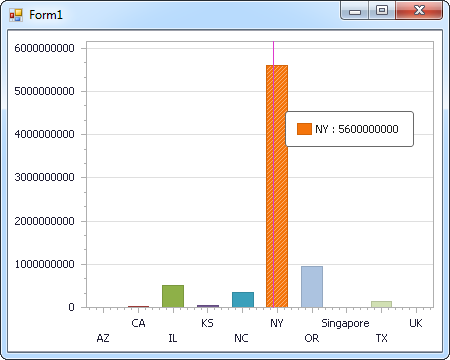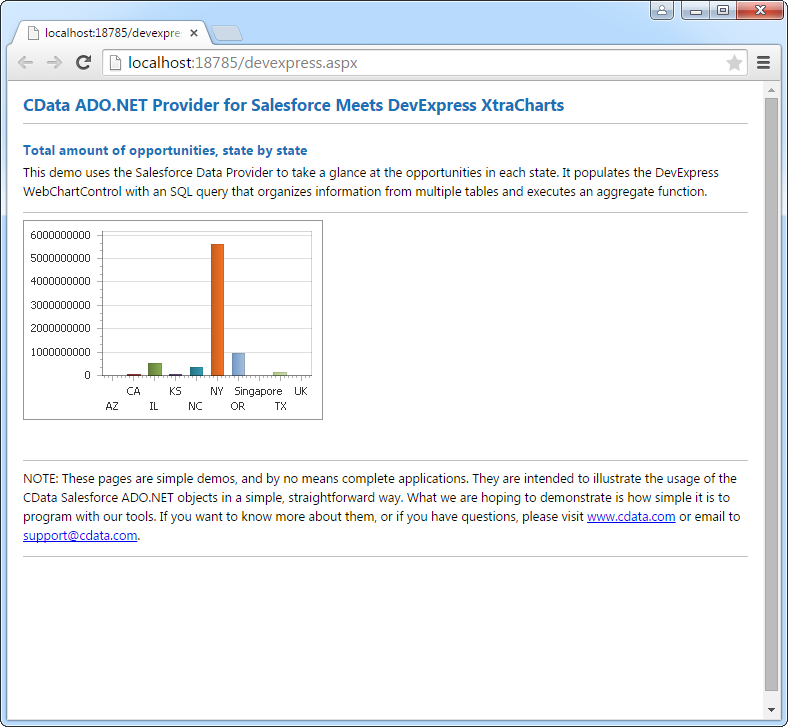Discover how a bimodal integration strategy can address the major data management challenges facing your organization today.
Get the Report →DataBind NetSuite Data to the DevExpress Data Grid
Use the CData ADO.NET Provider for NetSuite with the DevExpress Windows Forms and Web controls to provide NetSuite data to a chart.
The ADO.NET Provider for NetSuite by CData incorporates conventional ADO.NET data access components compatible with third-party controls. You can adhere to the standard ADO.NET data binding procedures to establish two-way access to real-time data through UI controls. This article will demonstrate the utilization of CData components for data binding with DevExpress UI Controls (Windows Forms and Web controls), specifically binding to a chart that visualizes live data.
The User and Password properties, under the Authentication section, must be set to valid NetSuite user credentials. In addition, the AccountId must be set to the ID of a company account that can be used by the specified User. The RoleId can be optionally specified to log in the user with limited permissions.
See the "Getting Started" chapter of the help documentation for more information on connecting to NetSuite.
Windows Forms Controls
The code below shows how to populate a DevExpress chart with NetSuite data. The NetSuiteDataAdapter binds to the Series property of the chart control. The Diagram property of the control defines the x- and y-axes as the column names.
using (NetSuiteConnection connection = new NetSuiteConnection(
"Account Id=XABC123456;Password=password;User=user;Role Id=3;Version=2013_1;")) {
NetSuiteDataAdapter dataAdapter = new NetSuiteDataAdapter(
"SELECT Customer.FirstName AS CustomerName, SalesOrder.Total AS SalesOrderTotal FROM SalesOrder, Customer", connection);
DataTable table = new DataTable();
dataAdapter.Fill(table);
DevExpress.XtraCharts.Series series = new DevExpress.XtraCharts.Series();
chartControl1.Series.Add(series);
series.DataSource = table;
series.ValueDataMembers.AddRange(new string[] { "SalesOrderTotal" });
series.ArgumentScaleType = DevExpress.XtraCharts.ScaleType.Qualitative;
series.ArgumentDataMember = "CustomerName";
series.ValueScaleType = DevExpress.XtraCharts.ScaleType.Numerical;
chartControl1.Legend.Visibility = DevExpress.Utils.DefaultBoolean.False;
((DevExpress.XtraCharts.SideBySideBarSeriesView)series.View).ColorEach = true;
}

Web Controls
The code below shows how to populate a DevExpress Web control with NetSuite data. The NetSuiteDataAdapter binds to the Series property of the chart; the Diagram property defines the x- and y-axes as the column names.
using DevExpress.XtraCharts;
using (NetSuiteConnection connection = new NetSuiteConnection(
"Account Id=XABC123456;Password=password;User=user;Role Id=3;Version=2013_1;"))
{
NetSuiteDataAdapter NetSuiteDataAdapter1 = new NetSuiteDataAdapter("SELECT Customer.FirstName AS CustomerName, SalesOrder.Total AS SalesOrderTotal FROM SalesOrder, Customer", connection);
DataTable table = new DataTable();
NetSuiteDataAdapter1.Fill(table);
DevExpress.XtraCharts.Series series = new Series("Series1", ViewType.Bar);
WebChartControl1.Series.Add(series);
series.DataSource = table;
series.ValueDataMembers.AddRange(new string[] { "SalesOrderTotal" });
series.ArgumentScaleType = ScaleType.Qualitative;
series.ArgumentDataMember = "CustomerName";
series.ValueScaleType = ScaleType.Numerical;
((DevExpress.XtraCharts.SideBySideBarSeriesView)series.View).ColorEach = true;
}







